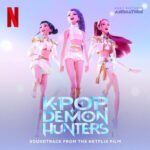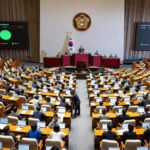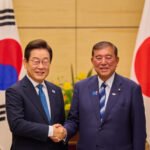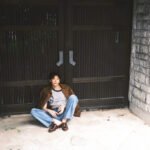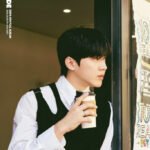Hyundai Mobis employees inspect the biodiversity of the Miho River, Jincheon, North Chungcheong Province (Courtesy of Hyundai Mobis)
Hyundai Mobis Co.’s efforts to build a better tomorrow don’t stop at developing future mobility technologies like autonomous driving, connectivity and electrification.
The auto parts maker under South Korea’s leading auto group Hyundai Motor Group also actively encourages its employees to engage in active social contribution activities to preserve the Earth, and to make it greener and safer for future generations.
In April, Hyundai Mobis employees planted 70 Korean willow trees along the Miho River in Jincheon County, North Chungcheong Province, where the company’s production facilities are located.
They hope the newly planted willow trees will provide many animal species with new, safe homes to live and rest.
Following the tree-planting activity in the spring, the company in August pledged to work together with the Jincheon County Office and social cooperative Hangang to restore biodiversity in the Miho River area.
These activities are part of Hyundai Mobis’ long tradition of environmental conservation and social contribution activities dating back to 2012.
DECADE-LONG CONSERVATION PROJECT
The auto parts vendor created an ecological woodland, dubbed Mir Forest, near its Jincheon plant after years of carrying out a slew of environmental restoration projects for a decade and donated it to the county in 2022.
Hyundai Mobis employees pose for a photo after their biodiversity study of the Miho River, Jincheon, North Chungcheong Province (Courtesy of Hyundai Mobis)
In May, the company conducted a biodiversity survey in the same area to identify all species there and build a database of them, which will be used to revive the ecosystem. It plans to carry out another ecosystem survey later this year, it said.
The previous surveys conducted in 2013 and 2023 discovered endangered species such as red-crowned cranes, buzzards, mandarin ducks, pheasants and otters.
Its decade-long environmental conservation efforts have also evolved into cultural heritage protection activities.
In April, the company’s employees and their families and friends volunteered to clean cultural properties such as Sungkyunkwan, Korea’s foremost educational institute dating back to the late 14th century.
The company organized the cultural heritage protection project for the first time this year, and the program was well received by its employees and communities.
The company has planned to carry out the project as a regular event six times a year through this year.
Hyundai Mobis employees and family members varnish the floor of a Korean traditional building (Courtesy of Hyundai Mobis)
HYUNDAI MOTOR GROUP AT THE FRONTLINE
Hyundai Mobis expects its environment and cultural heritage conservation activities will advance its sustainable management as they can promote active communication and collaboration with various stakeholders in the fields sharing the company’s goals and impacted by its business.
This is also part of its parent Hyundai Motor Group’s concerted efforts to respond to worldwide calls for environmental protection and carbon neutrality.
Under the Advancement for Humanity vision, the Korean auto behemoth encourages its about 30 units and their employees to build consensus and take various actions for carbon neutrality beyond developing related technologies.
The group has set a goal to achieve net-zero carbon emissions by 2050 under a clear RE100 roadmap to use 100% renewable energy in its overseas factories by 2045 and in every group company by 2050.
Hyundai Mobis’ sibling companies, including Hyundai Motor Co., Kia Corp., Hyundai Engineering Co. and Hyundai Steel Co., have also been actively taking part in various sustainability promotion campaigns and volunteer work projects for the planet and society.
These activities include various social contribution initiatives aimed at positively impacting society, such as creating school gardens and giving educational support to children.
By Jin-Won Kim
jin1@hankyung.com
Sookyung Seo and Jennifer Nicholson-Breen edited this article.


